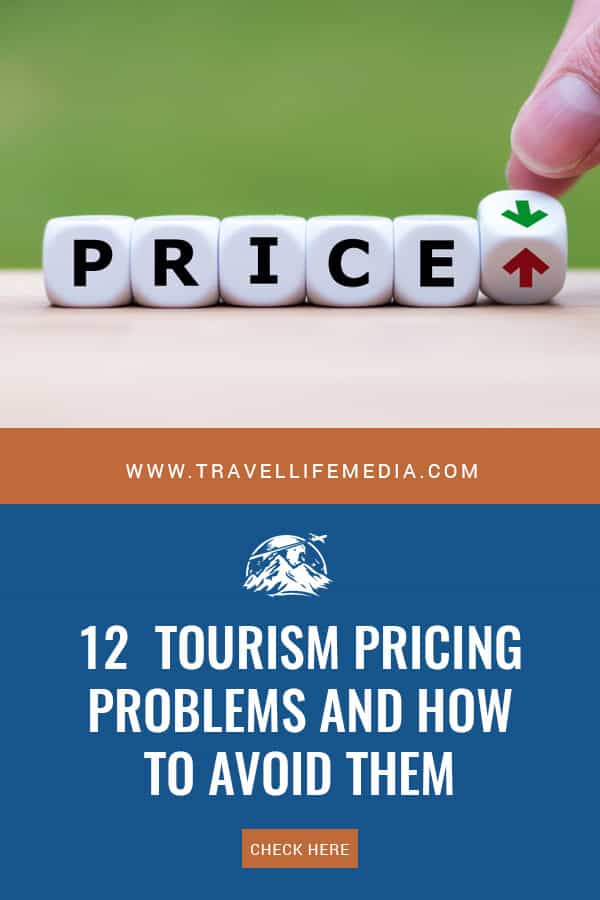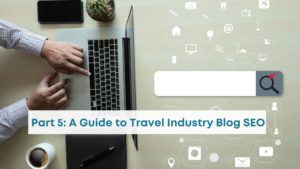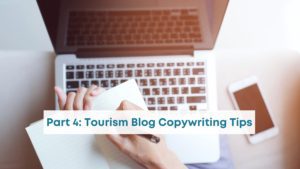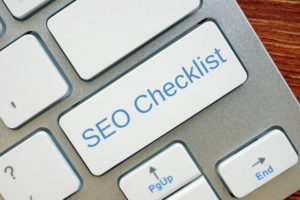Setting price is not an easy process, and you are not alone! After years of working on pricing strategy for all kinds of products in tourism and other industries, it has become apparent that there are 12 common tourism pricing problems that many of us face when pricing products. Managing these problems will ensure you price your products and services objectively and confidently, rather than feeling overwhelmed and constantly second-guessing your pricing approach.
Even though we are in a pandemic, and many of our businesses are closed, partially open, or we are not running at capacity, pricing principles will help you stay on track to manage control of your prices rather than your prices controlling you.
Before you even consider dropping your price for your tourism products or services, Check out these 12 tourism pricing problems and how you can avoid them (and bonus examples and worksheets)
The 12 Common Tourism Pricing Problems and How to Fix Them
Problem 1: Assuming that everyone wants to pay the lowest price
Meaning: “Not everyone wants to pay the lowest price – and if they are, you haven’t convinced them to think about anything else!”
The majority of consumers are value-based shoppers and not price-based shoppers (even if they say they are price-driven). This means that there will always be a trade-off your guests will make because of what they perceive is value to them.(and this is very personal)
i.e. Some travelers will see value in a private bathroom and they will pay more for it. Others will see your consistently good reviews, which will signal perceived high value in your brand. Other travelers will be inspired by who you are and what you stand for, and thus they will see you as a quality brand perceive you are worth more. The value they place on this- again is personal.
How to Fix This Problem:
Never communicate price first on your website and marketing materials.
- Meaning, never put the price as the main focus on your website. i.e. Don’t use a pricing table (like restaurants do – and I’ve seen tour companies do this) it forces the reader just to think price. Instead, you want to inspire them, persuade them, and sell to them because of the quality of your products.
Here are 2 examples of what NOT to do. Price lists focus consumers on the price NOT the value.
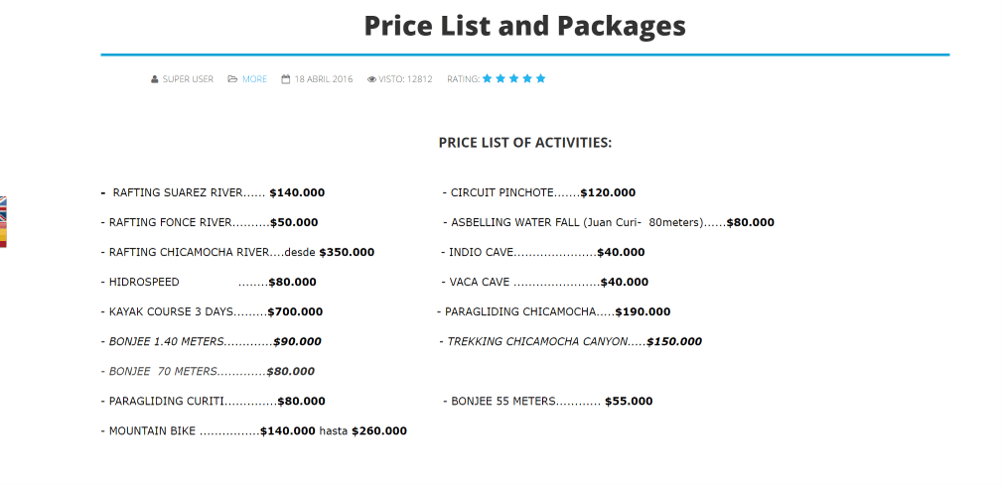
Tour Companies don’t do this
The same for hotels – a price list doesn’t entice the reader to choose value, instead they only focus on price.
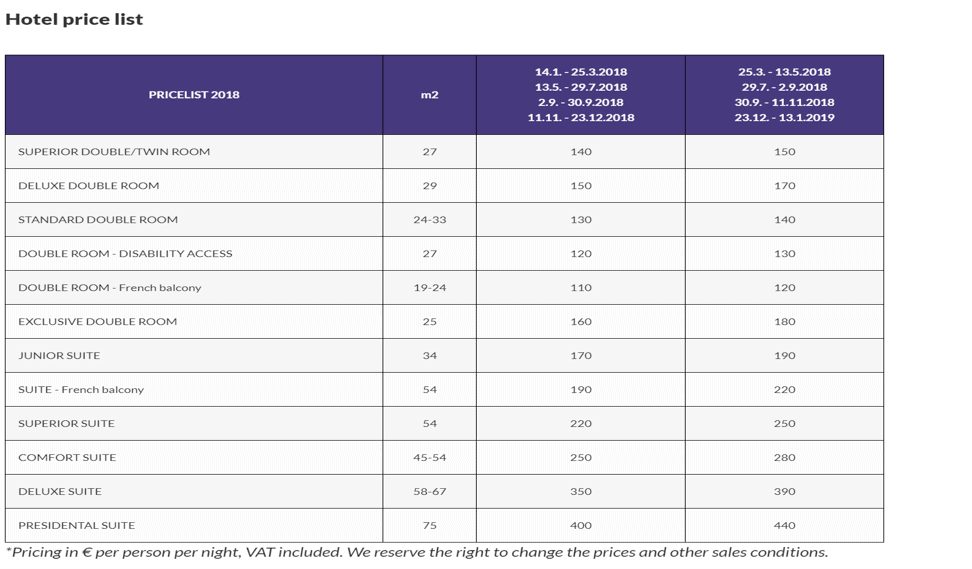
Hotels, please don’t price like this
We can all learn something from restaurants – they know how to entice/persuade based on their product descriptions, like below.
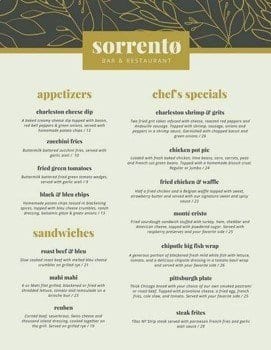
We can learn from a restaurant menu – they entice and persuade the reader based on the description.
The more you focus on persuading readers and enticing them- the less they focus on price. For specific products on your website:
- Capture their attention with an engaging and interesting title. (learn how in this link)
- Describe and entice with great photos and motivating and emotional descriptions
- Build trust by showing your reviews for that product
- Leave pricing for the detailed descriptions of your tour, attraction or room in your marketing and communications
- Understand your target audience so well that you speak to them directly and meet their needs so well that they can’t say no. (and again, they don’t focus on price)
- Create a strong brand – with quality services, credibility, great reviews, consistency – an excellent reputation.
- Share your WHY (your purpose, personality, and real self) because people connect more with people than with a company.
- Offer different products/different prices – if there is something more that they value – they could be willing to pay extra for it?
2. Do not let your views about pricing (and money) to price your products
Meaning:
Our opinions about money is related to our views about pricing. These beliefs can be deep-rooted and emotional, and most of us have strong views and personal relationships with money.-We have beliefs growing up based on how our parents felt about money, how they managed their funds and what they taught us.
The result is that we may PERSONALIZE our pricing.
What we feel our travel product or service is worth …is what WE FEEL WE ARE WORTH.– These feelings we have will impact how we set prices.-Often, we set prices too high or too low – because of emotional reasons.
How to Fix This Problem:
- Our goal here is to take the emotion out of our pricing.-Awareness of how we approach our tourism pricing (or anything) is the first step. We must realize we are doing something that doesn’t work.
- First: Ask yourself honestly: Did you arrive at your current pricing EMOTIONALLY or OBJECTIVELY?
- Use a system to set your price – a method that includes facts: we want to remove the emotion from setting our pricing (facts and numbers to guide you) -and use a system and standards to set your price.
- Avoid pricing without having any facts and details at all – Knee jerk reaction pricing doesn’t work. A pricing expert would never blurt out a price — because pricing is never a simple answer.
- Look at all the pricing factors when setting your tourism price- review the market dynamics, and arrive at a price objectively. (Read on, and I’ll explain all the factors)
3. Focus on the profit you are generating, NOT the quantity you are selling
Meaning:
- When your mindset is focused on the number of seats, or rooms, or events that you sell, it is easy to resort to lower prices and lower profits than you need to.
- And when you focus on the quantity, it can result in favoring lower profit actions in your business.
- It’s easy to resort to discounting -to get more bookings, which isn’t always the solution.
Examples of focusing on quantity instead of profit:
- Rewarding sales staff (or agencies) for selling quantities of rooms or tours (or any tourism service) instead of profit. They may sell the cheapest products instead of your premium products that earn you more profit.
- Placing preference to lower profit products on your website when your lowest priced products are more visible – or you use words like “best,” or “special” – This will train the reader to go to the cheapest options.
How to Fix This Problem:
- Change your language and change your viewpoint – Profit per product/service instead of how many you have booked. Focus on your profit mix (the average profit, not the # of them)
- When you are optimizing your website and have limited time – Reserve the time to focus on your higher-profit products – Ensure they have stellar photos, the best descriptions and copy.
- Add a favorites or popular booking section on your website home page that features your higher-profit products as a priority to showcase rather than just your fast movers.
- As most readers are right-handed, typically, the right-hand side of the page vs. the left side gets more views, and you can test this using heatmap software (like hotjar.com) to see what sections are clicked the most pictures – and move your higher-profit products there.
- Look for opportunities on your product pages to place higher profit products ahead and ideally above the fold, wherever is the most visibility on the page.
- Add more visibility on your top navigation – the best section – a drop-down above your lower profit products.
4. Do not list your tourism price the same as your competitors
I’ll state it again, PLEASE don’t price the exact same price point as your competitors. WHY?
*Value is a perception, not a calculation, and pricing psychology happens here. Travelers will look at their perception of quality and weigh it with the price.
If you price the same as your competitor and your marketing, “seems’ better, **then you leave a question in the traveler’s mind if you are quality, trustworthy, and good brand. **
How to Fix This Problem:
- How can you seem better than your competition? Your marketing.
- **NEVER communicate your price first. You want to show your value – your quality – before they decide to buy or not buy- solely on your price point. **
- Warm-up your audience to get to know you – instead of talking price first – This is why we talk so much about the Buyer’s Journey/The Customer Journey does.
- Put yourself in the shoes of a consumer – the quality of your products/services – think about the products that YOU buy – what is it about their quality that persuades you to buy?
- Communicate your benefits (not features) and how that helps the traveler meet their needs. Write engaging copy that shows that you understand your target audience and you know what they are looking for.
- When you communicate authentically – your story, your purpose, and show the great people behind your business, this will help you establish trust, credibility, and persuasion.
- The better you understand your guest, the more you can better communicate to them to better meet their needs – thus you don’t have to drop the price – because they see value in your product.
- Your website design, videos – are the things that can inspire and show quality.
- The quality of your reviews (the quality comments and detail a traveler put into the review, the positive feedback ) helps solidify quality – and willing to pay for the price.
- Even if your price is slightly higher than your competition – you are seen as more trustworthy. HOWEVER – you need to use a system to determine your price.
Do I sound like a broken record? As you can see there are a lot of factors that will determine your price – because PRICING IS A PERCEPTION.
5. Please look at ALL of your COSTS and FACTORS when setting your price, before you price anything.
Meaning:
Why sell anything if you can’t cover your costs? Review all of these factors BEFORE you charge one single price to a future guest.
- When you use FACTS (like adding up your costs and factors) that will help you avoid losing money.
- In Pandemic times – this is the time to reduce your costs as much as possible and understand what the market (consumer) will pay. (** hint they don’t want to pay the lowest price – we’ve seen examples of tourism businesses hold or even raise price – people want to travel!)
How to Fix This Problem: Use a spreadsheet or accounting system to tabulate all of your costs and factors to set your tourism price.
A.Commissions – What you pay to online travel agents (OTAs), retail travel agents, destination management companies, travel agents, wholesalers. This is anyone who also sells your products (even the transport company or hotel concierges recommend your business for a commission). These are all commissions and if you don’t watch ,they will eat away your profits.
– When you negotiate with these partners, ensure you communicate your retail rates on these partner sites, not your net rates.
B. Profit- is not a bad word – it’s how a business operates and how it can reinvest money to improve and move the business forward. It’s something that needs to be included in the price of your product. In Pandemic times – and not working at full capacity – this is going to be more difficult in the pre-pandemic days
C. Then there are all the costs:
- Fixed: Costs that you need to pay no matter how many guests you host – Such as salaries, permits, vehicle payments
- Variable: The costs that change depending on how many guests you host. Such as cleaning of room linens or entrance fees
Now, this may depend on how you structure your business, but it’s easy to not look at all factors that affect you no matter what.
D. Seasonality — low and high season is very much a challenge in the tourism industry that can be addressed with smart, focused promotions and to plan for the lower revenues in your financials.
E. Added value — what are the things you have put into your product that is a real cost that you need to account for? i.e., If you put in a free breakfast into your offer – are you accounting for this in your expenses? * Often these costs are missed.
F. Capacity/Occupancy – your capacity – what can you handle in terms of guests – whether it’s rooms, seats, or equipment?
How can you organize all these costs?
Here is a great resource from Ben Oliver from Drinking History Tours who generously shared his pricing template for his costing of his tours. Download it below.
Download the pricing template here
*6. Not Analyzing the market and what your guest is willing to pay
Meaning:
What is happening in the market – what are the going rates?
- This comment does not mean that travelers will ONLY pay the lowest price.
- I have seen many tourism businesses hold or raise their rates even during the pandemic. People want to travel, DO NOT assume they want the lowest price.
- The COVID Factor – Looking at the market is more important now more than ever. What can you bear with the restrictions, limitations, and reduced traffic? What is possible for you to still manage your business, not lose money, and forecast for the future?
- Review all the current rates, your competitor’s rates, and how do their products and services compare to yours? (please don’t match their price – see problem #4)
- This requires doing market research – pricing analysis of your competitors, the market, and asking people in your target audience to understand their views on pricing in tourism.
- Demand Dynamics –This is similar to analyzing the market – No doubt your guests will pay more for rooms and tours for a high demand region vs. a lower demand region. Of course, they will have varying amounts of choices to choose from.
7. Using the SAME profit margin on all products/services
Meaning:
Sure, it is much easier to calculate our costs and numbers using one profit formula, but if you put in the work to separate your products/services, it may reveal some profit opportunities for you.
- Different tours, attractions, rooms, or transportation vehicles are not the same. They have different costs, amenities, require varying amounts of staff or resources.
- For transport – other vehicles have different rates of insurance, wear, and tear and gas expenses.
- And some guests will pay more for things that they value! (like a feature: walkout balcony, private bathroom, a tour where lunch and airport transfer is provided)
I.e. The mistake is when you lump all your profits together: For example, we sold 100 tours and made $500
Instead of: We sold 50 3-day cultural tours, ten 2-day hiking tours, and 12 city tours, and we made $1000
How to Fix This Problem:
- Look at your products as individuals. What are the costs for each?
- And how can you differentiate them by price? (hint: get feedback from past guests on the value of your products – you will find out quickly if you can increase your price for some)
8. Pricing for Market Share NOT for Profit
Meaning:
- This is about pricing your products relative to where you stand relative to your competitors and your tourism market.
- For example, you have 10% of the food tours market in your city, and you price to grow very quickly to double your share to 20% of the market.
This is an outdated, externally focused approach.
- It is also big business thinking – you will find large corporations doing this practice, and I’ve worked in enough of them to know that this doesn’t work in the long run.
- It sets you up to price low without looking at all factors (like all your costs) and makes it exceedingly difficult to raise prices later. It will often cost you more – a lot more, in money, marketing, and promotions than the incremental gain in share.
It also is difficult to accurately measure market share % when you don’t have useful data and the tools to measure it – so you don’t measure against a real number.How to Fix This Problem
Follow a systematic process to set your pricing – know your numbers – your break-even point. If you are spending to drive market share – above your break-even why do it?9. Pay yourself first – before you forget to do it
Meaning:Often I hear owners and operators pay all their suppliers before themselves. This is a common problem for many entrepreneurs because you’ve invested your heart and soul into the business.
You have to survive to be able to run the business, don’t you? And put food on the table, and look after your family?How To Fix This Problem:
- Add your salary to your costs – you need to pay yourself and put food on the table. – Profits are different – these are over and above what you need to survive – call them “gravy.”
- Of course, in COVID times, when many of our businesses are closed and we aren’t making any income, however, and when you do open again – your Income must be factored in to survive.
10. Relying too much on discounting and thinking that raising prices will result in lost profits.
Meaning:
Discounting can be a dangerous game, and it is hard to get out of. It’s also dangerous to not increase pricing for fear that your profits will go down as a result.
There will always be a competitor who will price lower to get volume (not profit), But you can look at this differently – your margins are a much better indicator of everything rather than sales.For example: Tour A is priced at $120, and the cost is $80. The gross profit is then $40, Which yields a profit margin of 50%. So, what if we raised the price of the tour by 10%, to $132? This would yield a gross profit of $52 or 65%? (see below)

Even if your conversions (the number of guests booked dropped by 30%, you would still make more money.
There is a good chance that your potential buyer, after spending hundreds of dollars to travel, will pay $12 more. The most important thing here is you need to show a differentiated brand and better VALUE proposition than your competitors.
The other benefit here is the incremental margin will allow you to discount when there are those times that promotions are necessary (like seasonality)
How to Fix This Problem:
- Work out pricing scenarios – regular price, and promotional prices.
- It would help if you didn’t become a brand that everything you stand for is the lowest price – and you have nothing else to offer your guests. That is why branding and communications are so crucial.
11. Not Reviewing Your Pricing Regularly
Meaning:
- Pricing cannot just be set once and never touched again.
- The market dynamics are always changing.
- Pricing is fluid it is not fixed – perceptions change
- Market conditions, competition changes – more of them, and they change their pricing
- Think of all the online travel agencies and how that affects your price
- AND your costs will vary too.
How to Fix This Problem:
- Review your pricing regularly – COVID times require a regular review of your price.
- Goal: finding the balance between profit maximization and good sales velocity.
- And often, you need to experiment with prices to understand that.
12. Leaving your pricing fixed instead of Dynamic Pricing
Meaning:
- How do you manage the highs and lows of seasonal costs, hours, and having flexibility in your costs?
- Learn from the hotel industry – Different pricing for different times of the year is a common practice and the hotels have been doing it for years. The OTA’s do it to – Booking.com and Airbnb.com are masters at using dynamic pricing. Consumers expect to pay more in high season. Why don’t all tourism niches do this?
- This approach helps you spread your cash flow accordingly and manage your profits.
How to Fix This Problem:
Here are some excellent dynamic pricing resources to get you started. And why not do a test in your market with staggered, dynamic pricing?
There you have it. 12 most common problems with tourism pricing and how to avoid them – I’d like to know – what have we missed?
As always there is a lot with pricing. Here are the concepts explained again in this video below.
Stay tuned for more pricing and revenue management tips on our blog.
